|
Berenger
Saunière
François Berenger Saunière was born on April 11th, 1852 in Montazels.

He was the eldest of 7 children: 3 sons
(Alfred, Martial, Joseph) and 3 daughters (Mathilde, Adeline,
Marie-Louise). He was the son of Marguerite Hugues and Joseph
Saunière (1823-1906), also called "cubié". His father had been the
mayor of Montazels. He also managed the flour mill and he was the
steward of Marquis de Cazermajou’s castle. His three sons studied a
lot. Alfred became a priest; Joseph wanted to be a physician
but he died at 25. Berenger was insolent, independent, fundamentalist. He rebeled against hierarchy. He was an athlete, with deep eyes. He
went at school at St. Louis in Limoux. He entered the seminary in Carcasonne
in 1874.
He was ordained as a priest in June,
1879. He was a vicar in Alet from July 16th 1879 to 1882, a priest
in the deanery of Clat (282 inhabitants) from June, 1882 to 1885. He
was a teacher in the seminary in Narbonne but, because he was unsisciplined, he was appointed to Rennes le Château (298
inhabitants) on June 1st, 1885. He was anti-republican and he had to
leave the diocese from December 1st to July, 1886 to give lessons
once more in the seminary of Narbonne. As the villagers wanted him
to come back, the prefect changed his mind and called him back. In
May 1890, he also said mass in Antugnac on Sundays. At fifty he had
a glass eye. He often played lottery (loterie de la maison des
artistes)
He had an ambiguous relationship with Marie Denarnaud. When he
arrived, he lived with Marie’s family in the presbytery, but as he
didn’t get along very well with her mother, he left and lived
in the building that he had built next to the churchyard. One
can read in his diary,
4/19/1892 : came back from
Carcassonne, drama on the evening, Marie came
back home.
4/22/1892 : fine weather, Marie goes on bringing my meals.
.
He resigned on February 1st, 1909 and
was no longer a priest in 1911. He was sued for trafficking in
masses in 1915. He lived the rest of his life penniless, selling
religious medals and rosaries to wounded soldiers who were stationed
in Campagne les Bains. He was accused of taking in German
spies.
He had a attack on January 17th 1917, and he died on January
22nd.
When he died, many books from his library were bought by the
International League of Antiquarian Booksellers, a British
organization which also bought Father Hoffet’s library.
Go Back
Characters
|
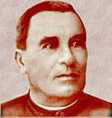
Sauniere
Berenger
.
. |
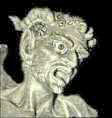
click image
Asmodeus The
Devil
. |
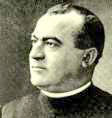
click image
Saunière
Alfred
Beranger’s
brother |
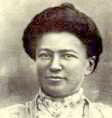
click image
Denarneau
Marie
. |
|
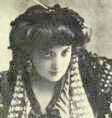
click image
Calve Emma
. |
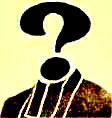
click image
Boudet Henri
Rennes les Bains Priest
. |
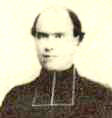
click image
Gélis
Antoine
Coustaussa Priest murdered |
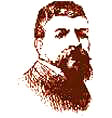
click image
Dujardin
Beaumetz Etienne
. |
|
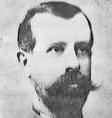
Jean
Salvator d’Autriche
. |
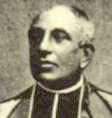
Beauvain de
Beausejour Paul-Félix
He was the bishop of Carsassonne in 1902 |
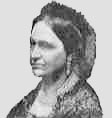
La Comtesse
de Chambord
. |
|

L’abbé Pons
Father doesn’t really belong to the story. He was
appointed as a priest in Rennes le Château in 1836. He
was a crook who asked money to accomplish miracles and
to heal ill people. He was born in 1806
. |
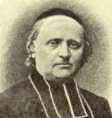
Billard
Arsène
Felix arsene Billard was born in st Valery en Caux on
october 23rd 1829. Started teaching in the school Jom
Lambert. Ordained as a priest on october 4th 1853.
Appointed as a vicar in St Remy de Dieppe on June 29th
1858. Appointed as a vicar in st Patrice de Rouen on
February 2nd 1860. Appointed as a vicar at the cathedral
in Rouen on November 14th 1863. Appointed as a curate in Caudebec les Elbeuf on August 1868. Became a canon on
January 1st 1877. Appointed in Carcassonne on
February 17th 1881. Succeded Monseigneur Leullieux on July 25th
1881. Died on December 12th 1901 |

Hoffet Emile
He spoke several langages, he was a scholar. He was a
priest in the church of La Trinité, and a member of the
documentation service of Vatican. He wrote a lot about
freemasonry and rocicrucians. He published a magazine
with the occultist René Guénon : REGNABIT
. |
Go Back
The Story
1st Part
Marie d’Hautpoul and Father Bigou
Antoine Bigou had succeeded his uncle Jean as priest of Rennes le
Château in 1774 . He was the confessor of marchioness of Hautpoul. It
is said that she told him a very important family secret and gave
him some documents just before she died. It is said that she asked
him to tell the secret to another person who would understand it’s
importance. Marie de Négri Dables, Lady of Hautpoul died on January
17th 1781 and was buried in Rennes le Chateau’s churchyard
Bigou hid the documents in one of the pillar that held the altar in
the church.
In 1791, he laid a flagstone on the marchioness’ tomb.
He had some strange signs carved on the tombstone : ET IN ARCADIA
EGO :I who am also in Arcadia
Moreover, as the lady died on January 17th 1781, the date on the grave
should be MDCCLXXXI instead of MDC O LXXXI
In the church, he had the Knights flagstone laid before the
altar, but the sculpted side was facing the ground.
He was considered a non-juring priest and he had to flee to
Sabadell, Spain, where he died on March 21st 1794 after he had told
the secret to Father Jean Vié (priest in Rennes les Bains) and to
Father Emile François Cayron (priest in St Laurent de la Cabrerisse).
Both men were priests of their towns from 1840 to 1872
The signs on the tomb were erased by Sauniere , but we know of 2
reproductions of it. One was made by Eugène Cros( an amateur
archeologist), the other by Eugène Stublein. On Stublein’s drawing
though, the greek letters ( et in arcadia ego) do not appear.
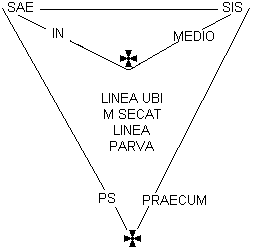
Come-Sourde
Stone
This stone was found in the presbytery. It could be the stone of
"Come Sourde", which had been found by Ernest Cros (one of
Sauniere’s friend) in the mountain of Come Sourde. Enest Cros had
left it in the presbytary. This stone bears marks, as if it had been
hit by a chisel and hammer. It seems someone had wanted to
erase what was written on it.

Ernest Cros had made
a copy of it.
Go Back
2nd Part
Father Saunière
On june 1rst 1885, the clergyman Berenger Saunière was appointed
priest of Rennes-le-Château. He succeded Father Antoine Croc who had
himself succeeded Father Charles Eugene Mocquin. There, he found a
ramshackle church. The village did not have enough money to
restore it.
As the presbytery needed repair, the priest had to live at
Antoinette Marce’s for a while. The cost of the most urgent
repairs was said to be about 2797 Francs (using the old gold value
of the franc).
Saunière had to leave the village for some time because of an
anti-republican speech he made on october 4th 1885. He came back to
Rennes-le-Château in july 1886. Thanks to a gift of 3000 F (gold
value) from Marchioness of Chambord and 1400 F (or 2500 F) given by
the local council, he was able to begin the restorations. He spent
518 F (gold value) of his own money. Some say he would have
inherited this money from Father Pons.
During the work, the workers found a hiding place in the ground.
Later, they said there was a little cauldron filled with golden
coins but Father Saunière told them they were only holy medals from
Lourdes. The priest had the altar built over the hiding place.
In 1886, he offered a vermeil chalice to Father Grassaud, priest of
Amélie les bains. It still exists and it was dated 19th century
Those who worked with Saunière are :
- Marie Dénarnaud his
servant
- The building contractor, Elie Bot.
- The bricklayers Pibouleau and Nazaire Babou.
- The altar boys Rousset et Antoine Verdier
In 1891, he asked the town council for
the right to build a calvary before the church. In spring, Bérenger
Saunière began to work on the garden in front of the church. He
brought stones from the country himself to build a grotto. He also
build a calvary on which was written "Christus A. O. M. P. S.
Defendit".

Go Back
3rd Part
A. O. M. P. S.

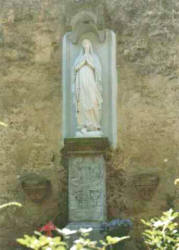 Many
people wanted to see a connection with the priory of Sion in this
sentence : Many
people wanted to see a connection with the priory of Sion in this
sentence :
Christ defends the Ancient
Mystic Order of the Priory of Sion.
CHRISTUS
ANTIQUUS
ORDO
MYSTICUSQUE
PRIORATUS SIONUS
DEFENDIT
This sentence is very well known by
theologians and means :
May Christ protect his people
from all evil
CRISTUS
AB
OMNI
MALO
POPULUM SUAM
DEFENDIT
He had a Visigothic pillar put the wrong
way up before the church. The statue " Our lady of Lourdes " on the
visigothic pillar was inaugurated on June 21th 1891. On the same
day, the 24 children of the village made their communion. He organized
a procession with the diocesan missionnary Father Ferrafiat(that’s
why it is written Mission 1891 on the pillar). He had the words "
pénitence pénitence "(penance penance)carved on the pillar to recall
the message of Lourdes " Kiss the Earth as a penance for sinners ".
Old Calvary
|
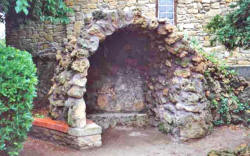
New Calvary
made by Alain Feral
. |
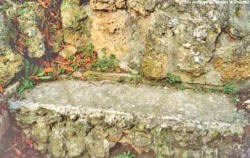
There is a
bench near the grotto. We can read an inscription : K X
L S X |
Two versions of what happened :
1) A few days later, the
bellringer, Antoine Captier, found a flask in an old wooden
baluster. The priest told him it contained relics. Actually,
there were 3 scrolls wich bore Blanche de Castille’s signature :
a genealogic tree about Dagobert II and two coded texts taken
from the Gospel.
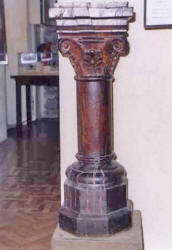
2) In the Visigothic pillar,
Father Saunière found 3 wooden tubes in which were 4 scrolls :
-
The Gospel according to St
john : the text in which Jesus visits Lazarus in
Bethania
-
Marthe and Mary of Magdala
-
Verses of Luc (VI, 1-5),
Matthieu (XII, 1-8) and Marc (II, 23-28)
-
A genealogical tree about
the unknow lineage of Dagobert II
According to the two versions,
Saunière would have given a copy to the Mayor.
The next day, he asked two workers to
lift up a flagstone wich was in the church before the altar. It is
called "The Knights flagstone". This stone had the sculpted side
down to the ground. On it, one can see two knights riding the same
horse. The workers thought it was a grave stone but the priest
halted the work. He told his superiors about this and so he met
Father Boudet and Father Gélis. Saunière worked in his church late
at night and he never let anyone come in. No one knows what he did
there : some said he had found out a crypt, others that Marie
Dénarnaud had found out what his secret was. . . The fact
remains that he had a pavestone sealed on this gravestone.
In his diary, under the date 09/21/1891 is written : "letter from
Granès, a tomb discovered, rain in the evening". He stopped the work
until October 14th 1891, the workmen were putting the pulpit in
place.
On 29/09/189, he wrote in his
diary he had met the priest of Nevian Father Gélis, Father
Carriere and Father Cros.
In his mail record, one can notice he
received many letters from Father Gélis, but none of these remain.
On 4/10/189, he wrote that
4 "colleagues" had visited him.
The Bishop of Carcassonne, Monseigneur
Félix Billard, sent him to Paris for 5 days in order to have the
scrolls deciphered. There he met Father Bieil, director of St
Sulpice. his nephew had Father Saunière at his house. He also met
Emile Hoffet, 20 years old who introduced him to literature (and
also to the opera singer Emma Calvet). After the scrolls had been
translated, Father Bieil (or Father Hoffet) did not give the
genealogical tree back to Saunière.
He brought back with him 3 copies of
pictures:
- "St Antoine’s Temptation"
by D. Théniers
- "the sheperds of Arcadia" by N. Poussin
- a picture of Pope Celestin V
Back to Rennes-le-Château, he had the
work start again. For the works, he employed Marie Dénarnaud’s
family, who lived in the presbytery . Mary’s brother and father worked
in the factory in Esperaza as hatters. Her father from 1894 to 1907
and her brother from 1895 to 1909. The priest raised all the paving
stones in the church during the night. Outside the church, he had
the churchyard gate built and also a building above the citern next
to the cemetary. On the graveyard gate was drawn a crane with
22 teeth.
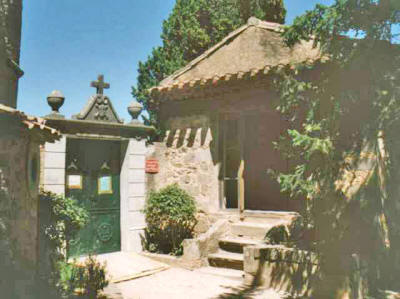
Sauniere lived in the new building for a
while so he was able to search through the cemetary at night. The
mayor found him once, opening a grave with Marie. Some
understood he was seen sifting the earth.
 It
was said he had erased words written on Marchionnes of Hautpoul’s
tombstone. Saunière stopped his research, for the feared
to be denounced to the prefect. It
was said he had erased words written on Marchionnes of Hautpoul’s
tombstone. Saunière stopped his research, for the feared
to be denounced to the prefect.
The statues were put in place in early 1897. On june 6th 1897,
the church was officially "opened" in the presence of Monseigneur
Billard.
From 1897 to 1899, Saunière often went away to unknow places. He
also had walks in the area of Rennes-le-Château. He was followed by
some inhabitants of the village who wondered where he was going. He
walked towards Rennes les Bains, went throught the forest of "
l’homme mort " (the dead man), jumped across the small stream of "La
Blanque" and climbed up the hillside of "Serbaïrou" towards "la
Pierre du Pain" (the stone of bread) on which it was said the Devil
had left his finger prints. A few months later, it is said he was
visited by Jean-Stéphane of Hapsburg who was called Mr Guillaume by
the villagers . It is supposed he offered 3000f (corresponding to
the value of the time)to find precious documents hidden in the
church…He came back several times during 6 years and he gave
Saunière 20 000F for his search ( which means 250 000F today).
Go Back
4th Part
The Domain
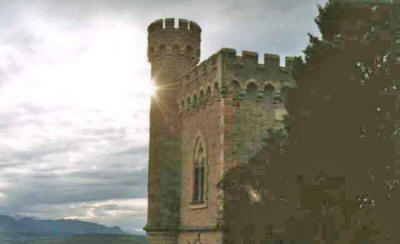
Bethania Villa
|

Construction |

Outside |

Outside |

Outside |

1st Floor |
|
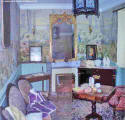
1st Floor |

2nd Floor |

2nd Floor |

2nd Floor |
|
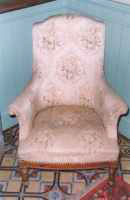
2nd Floor
. |
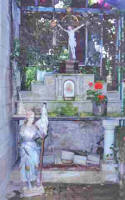
Personal
chapel under a veranda |
Magdala Tower
|

Construction
|
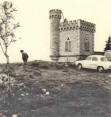
In the 60’s
|

. |
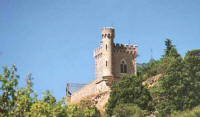
. |
|
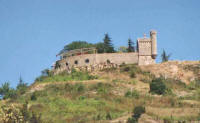
.
. |

.
. |

.
. |
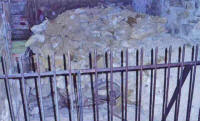
A cave,
inside the tower
(above and
below) |
|
 |
 |
 |
 |
He also planted an orange grove and
built a neo-gothic tower where he had his library (he had 10000
postal cards and 100000 stamps). It was called Magdala tower
and it had 22 crenels.
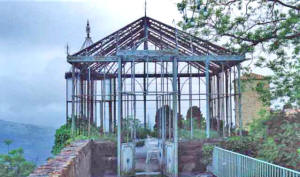
In 1900, the priest bought 6 pieces of
land, using the name of Marie Dénarnaud and began to build his
"estate". The architect was Tiburce Caminade, the building
contractor Elie Bot who had 17 workers under his orders, all of them
were fed by Saunière. The stones were cut in St Sauveur and brought
back on donkeys. First, Saunière had the villa "Bethania" built.
He wanted it to become a retirement house for the priests of the
diocese after his death.
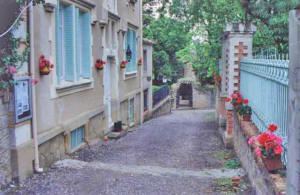
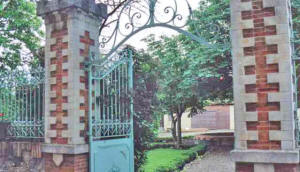
In the garden, there were many exotic
trees and animals : two dogs (Faust and Pomponet), 2 monkeys (Capri
and Mora), peacocks, cockatoos, exotic fishes. . .
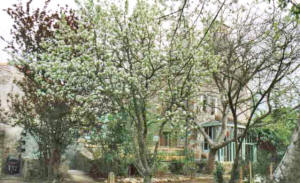
Some water went from a cistern to a
fountain. There was a wonderful view of the area from the
promenade.
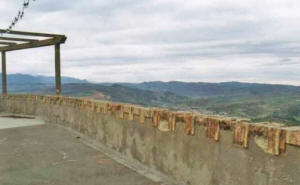
The whole work lasted 8 years. If one
looks at the map of the domain, one will see it looks exactly like
Mary Magdalene’s walk from Magdala to Bethania. Magdala tower
represents Galilee and Bethania Mansion, Judaea. It is said that many
famous people artists and politicians visited the priest (the Fine
Arts State secretary Henri Charles Etienne Dujardin-Beaumetz, a
freemason
 who
belonged to the lodge called "La clémente amitié" - the merciful
friendship). who
belonged to the lodge called "La clémente amitié" - the merciful
friendship).
It is told Saunière entertained Stephen of Hasbourg would have given
some money to the priest for his research. Father Saunière lived in
splendour, he was corresponding with many famous people and banks
and received important money orders. He was in contact with the
Petitjean bank in Paris. He also had accounts in the Bank of
Langudoc and Roussillon in Perpignan, in the Bank Pommier and Pavie
in Toulouse. Gérard de Sède said he had an account in Budapest
(he consulted the accounts himself in 1971 when the bank didn’t
exist anymore).
Anyhow, Saunière’s way of life began to worry the Bishopric who had
heard many complaints about him from other priests in the area.
Monseigneur de Beauséjour, bishop of Carcassonne wanted to send him
to Coustouges. Saunière refused to leave and resigned from his
belonging to the Church. a new priest, Father Marty. He was
appointed to Rennes on July 2nd 1909 and settled there on July 4th .
He was appointed in Rivel in 1912. Villagers prefered attend Mass in
Father Saunière’s private chapel. The altar was the original
church’s altar. .
On january 17th 1917, Saunière had an attack just before the Magdala
Tower. He asked for Father Rivière, priest of Couiza. The confession
was long and when Rivière went out the room, he was very pale.
. . Saunière received the last Sacraments and 2 days later he
died from a brain haemorrhage on january 22nd 1917.
(Note : some people thought the way the villagers behaved was a
mystery : they took away the bobbles from the blanket that covered
the priest’s body. It was only a devotion act, and an ancient
occitan tradition. )
Saunière died, leaving many plans behind him : he wanted to have a
car , to have the road tarred and another tower built, to have a
chapel in the graveyard, to rebuil Renne-le-Château walls.
It is said he spent 659 413 F (gold value) or 23 079 455 today’s
francs.
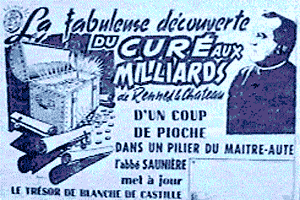
When his testament was opened, everyone
learnt he owned nothing. Everything belonged to Marie Dénarnaud. She
lived alone until Noël Corbu bought her estate for life. Marie
Dénarnaus and the Corbu family were good friends, so she made Noël
Corbu her sole legater on 07/22/1946. After Marie’s death, Corbu
opened a restaurant in the villa Bethania and he told the priest’s
story. He recorded a tape and played it for the restaurant’s
clients. He spoke the REAL facts but he also invented some of his
own. He didn’t earn much money and Mr Corbu died in a car crash in
1968. Saunière’s estate was bought by an occultist from Lyon: Henri
Buthion who made very. . . " special " lectures. Today’s,
it’s owned by a SCI which opened another restaurant and offers
lectures about different themes.
Go Back
|




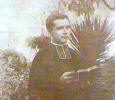
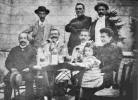
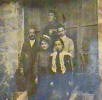
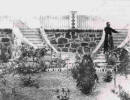


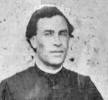













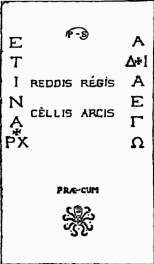
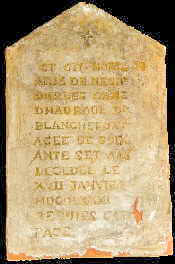
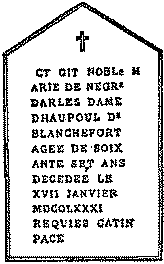

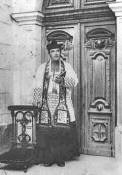
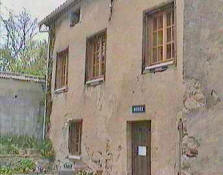
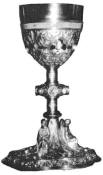
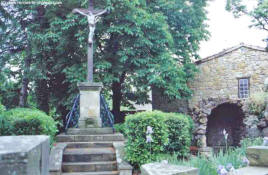


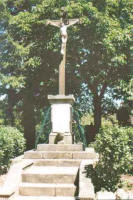
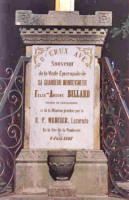
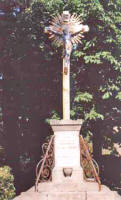
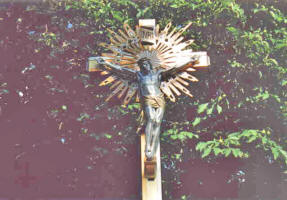




 It
was said he had erased words written on Marchionnes of Hautpoul’s
tombstone. Saunière stopped his research, for the feared
to be denounced to the prefect.
It
was said he had erased words written on Marchionnes of Hautpoul’s
tombstone. Saunière stopped his research, for the feared
to be denounced to the prefect. 




























